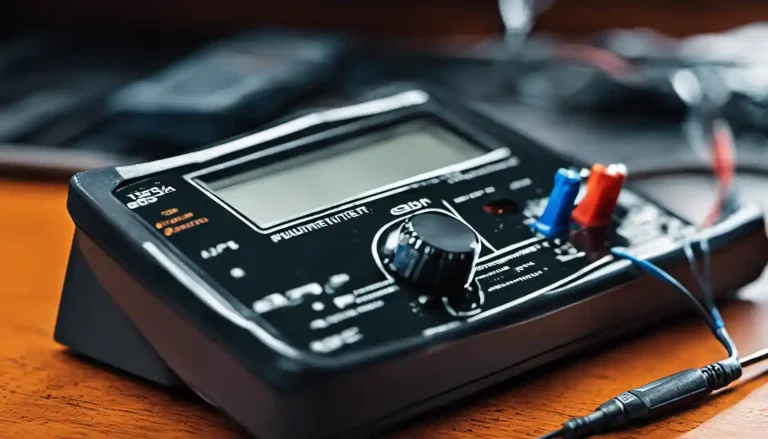Preparing for the Test
To test a solar battery with a multimeter, first, you need to set the multimeter to the Direct Current Voltage (DCV) setting. Then, while the solar panel is in direct sunlight, connect the red lead to the positive terminal of the battery and the black lead to the negative terminal. The multimeter’s readout will indicate the voltage of the battery.
Over the past 20 years, I’ve worked hands-on with all types of solar systems from little DIY projects to vast industrial power plants. Among the most common questions I get asked is, “Elliot, how do you test a solar battery with a multimeter?” Now, I’ve decided to share my knowledge in this comprehensive guide.
Understanding the Principle of Solar Battery
Let’s start with understanding what a solar battery is. Essentially, it’s a device that converts the sun’s energy into electricity and stores it for later use. It’s like having your personal mini power plant that’s not just eco-friendly but also cost-effective. Remember that understanding this basic principle is crucial to help you fully comprehend the processes involved when using a multimeter to check its health.
Familiarizing Yourself with the Multimeter
Next, let’s tackle the multimeter. It’s this nifty device that measures electric potential (voltage), current, and resistance. In the context of a solar battery, we’re particularly interested in the voltage reading. It tells us whether or not the battery is charged, and by extension, if it’s operating efficiently.
Safety Precautions While Handling a Solar Battery and Multimeter
As with anything that involves electricity, safety is always a priority. Always ensure that you’re using insulated gloves and shoes when handling both the solar battery and the multimeter. Also, always disconnect the solar battery from any solar system before carrying out a test.
Testing the Solar Battery with a Multimeter

Selecting the Multimeter
Choose a multimeter whose voltage range is higher than the voltage of your solar battery to protect it from potential overloading.
Setting up the Multimeter for Measurements
Set your multimeter to the Direct Current (DC) Voltage setting. Then connect the red (positive) probe to the battery’s positive terminal, and the black (negative) probe to the negative terminal.
Detaching the Battery If It’s Interconnected
If the battery is part of a series of interconnected batteries, remember to disconnect it before performing the test to avoid damaging the other batteries or solar components.
Performing the Voltage Test on the Solar Battery
Once your multimeter is connected, check the readout. This will indicate the voltage output of your battery.
Post-Test Procedures

Interpreting the Battery Voltage Reading from the Multimeter
The voltage reading on the multimeter determines whether the battery is working correctly. A 12V battery, for instance, should show a reading between 13.0 and 14.5 volts when fully charged. If it’s below 12V, then it might be due for a replacement.
Assessing the Performance of the Solar Battery Based on the Voltage Reading
A voltage reading within the expected range indicates that your battery is in good condition. It’s effectively absorbing and storing solar energy.
Determining If the Solar Battery Is Good or Faulty
Now, having done the test, you should know if your solar battery will last or if it’s time to invest in a new one. Remember, if the voltage reading is consistently low, it could mean that the battery is faulty, and you may need to consider replacing it.
How to Check Solar Battery Health

One of the primary responsibilities of having a solar energy system is knowing how to check solar battery health.
Key Indicators of a Healthy Solar Battery
A solar battery that is in good condition will have a high voltage reading, indicating it is retaining charge efficiently. Additionally, it will also be able to provide power consistently and for an extended period.
Key Indicators of an Unhealthy Solar Battery
On the flipside, if your solar battery is often depleted or if it can’t sustain power for your energy needs, then it might be unhealthy. A low voltage reading, as shown by your multimeter, is also a clear indication.
How to Revive or Improve the Health of an Unhealthy Solar Battery
In case your solar battery is not performing optimally, there are measures you can take. Such include reducing the load on the battery, regularly cleaning your solar panels, and ensuring the battery is well placed and ventilated.
Conclusion
And there you have it! An in-depth, step-by-step guide on how to test a solar battery with a multimeter. But remember, whether a pro or a solar-newbie, safety should always come first. I hope you found this guide useful – here’s to harnessing the power of the sun more safely and efficiently!



